Guide to Buying a Digital Camera
(So many cameras, which one should I buy?)
Copyright 2023 by Michael Brochstein
|
|
Guide to Buying a Digital Camera Copyright 2023 by Michael Brochstein |
|
If you only want the bottom line then read the "Rules" section below.
If you want a full explanation then read everything. |
| Michael's Rules for Buying a Digital Camera | ||
| Listed in no particular order | ||
|
1. If photographing sports is your interest then opt for a DSLR as its
reflexes are probably faster than other types of cameras. The exception
to this rule are specific mirrorless cameras (i.e. Nikon Z9, Sony A9,
Canon R3). 2. If you want a quiet camera then opt for a mirrorless camera. 3. If size and weight are an issue then opt for a fixed lens camera or a mirrorless camera. 4. If you are going on a safari then you will want a camera that has a long telephoto lens (i.e. a superzoom) or an interchangeable lens camera which you can attach a long zoom lens. 5. If you are a serious hobbyist or aspiring to be a professional then your safest bets are cameras made by Canon, Nikon and Sony and possibly Fuji. 6. If you can't afford the latest new equipment then late model excellent condition used equipment is almost always available (check ebay) and a good option. 7. With all else being equal, cameras with larger image sensors are generally preferable (they have better image quality compared) to cameras with smaller image sensors. 8. Buy an extra camera battery if your camera does not use commonly available AA or AAA batteries (most don't). 9. If all else is equal then only pay extra for a camera that can shoot RAW images if you realistically think that you will spend the time required to edit these images in Capture One, Photoshop or Lightroom (and the time necessary to learn how to properly use these software applications). 10. Buy a waterproof camera for water based trips (rafting etc). 11. A great camera will not make you a great photographer. Learn all you can about composition, lighting, how to use your camera, how to edit your images and about photography in general if you wish to create great images. 12. Should you use Photoshop to edit your images? Probably not. Learn how to use Lightroom first as Lightroom will probably satisfy most if not all of your editing needs. 13. If you do a lot of shooting with a camera held over your head or held very low then buy a mirrorless camera or a fixed lens camera with a tilting LCD screen. * See Michael's recommendations for specific cameras here. |
||
|
Introduction In early January 2023 B&H Photo listed 953 digital cameras for sale on its website (not including the 13 medium format digital camera models). While some of these were somewhat duplicative listings with the only difference being the color of the camera's body or what accessories were included, most were unique models. The goal of this article is to help you sort through all of these options so that you can find the camera that is best for you. When you have finished reading this guide you will have a better understanding of digital cameras in general and what to look for when buying a camera. With this understanding you will then be able to select a camera that meets your needs without too much overkill or over spending. This guide is designed to read linearly, from top to bottom as material that is introduced and explained in one place may be used lower down without an explanation. Please feel free to contact me at Michael Brochstein to ask questions and / or to make suggestions. |
|
| Why To Buy A Camera | |
| It is assumed that you have already thought about whether the camera that is built into your cellphone / smartphone is adequate for your needs and that you have found it inadequate. | |
| Why Do Some Cameras Cost More Than Others? | |
|
This may seem like an odd place to start an explanation of digital
cameras but knowing why some cameras cost more than others involves an
explanation of what is in a digital camera. There are a four major factors that would lead one camera to sell for more than another. They are (1) the type or category of camera, (2) image sensor size, (3) name brand and (4) features. |
|
| 1. Types / Categories | |
|
Broadly speaking, there are two categories of cameras; Non-Interchangeable Lens Camera - A non-interchangeable lens camera has a lens affixed to it that can not be changed (it is permanently attached). It can also be referred to as a fixed lens camera. Most "Point-n-Shoot" cameras fall into this category. Some fixed lens cameras are aimed at the low end of the market and are sometimes referred to as Ph.D. cameras where PHD stands for "Push Here Dummy". This nickname is not derogatory as a goal of most of these cameras is to be easy to use. Other fixed lens cameras are very high end in terms of features and performance. Interchangeable Lens Camera (ILC/ILEC) - As the name implies, this type of camera allows the user to remove its lens and replace it with another. |
|
| 2. Image Sensor Size | |
|
There is a dramatic difference between the size of an image sensor in a
smartphone or a low end camera and the size of one in a high end
camera. For cameras with the smallest images sensors the size of the
image sensor is not a significant percentage of the cost of manufacturing the
camera but it is in cameras with larger sensors. The increase in image
sensor size is not linear, larger sensors cost more per square
millimeter than smaller ones. Typical camera image sensor sizes range from under 28 square millimeters to 864 square millimeters (medium format digital cameras have larger sensors and are beyond the scope of this guide). The illustration below (from https://en.wikipedia.org/wiki/Image_sensor_format) illustrates the differences. In it the blue rectangle indicates the size of a "full frame" images sensor (see top center drawing) and the green rectangles with a black border show the size of smaller sensors relative to that of a full frame sensor (in blue outline). |
|
 |
|
|
A question you might have is why should someone buy a camera with a
larger image sensor when a smaller image sensor is less expensive and
would allow a camera with it to be smaller and lighter. The answer is
that a larger image sensor allows a camera to capture images a at better quality
level in darker
places than a smaller image sensor camera can, has less noise (less
"grain", more below) and usually also has a wider dynamic
range (i.e. better shadow detail). The reason for this is because, for sensors with the same number of pixels on them, a larger sensor has a larger area for each pixel (actually it's called a "photosite" but I'll use "pixel" in this article). A larger area area allows more units of light (photons) to hit each pixel during an exposure. It's similar to having a bigger net to capture fish, the larger the net means the greater the number of fish you might catch each time you use it. A larger pixel (photosite) also means a better signal to noise ratio (huh!?). Imagine a pixel that is 100 square millimeters versus one that is 10 square millimeters (both of these sizes are not realistic as photosites are much much smaller). When you take a photo photons of light go through the lens and hit the image sensor. If the light level is the same at the large and the small pixel then the larger pixel, will capture more photons of light as it has a larger area for photons to land on. At a certain light level the smaller pixel might capture 42 photons and the larger pixel captures 420 (as it's ten time larger). If there are any problems and the number of photon's counted at the pixel is off by 4 then a difference of 4 on the smaller sensor is about 10% (4/42) but only about 1% (4/420) on the larger sensor. This means that the data from the larger sensor will have less noise (inaccurate information) than the data from a smaller sensor. |
|
| The following chart might also help illustrate the differences. | |
| Camera Type |
Image Sensor size (**sq mm) |
Sensor size nickname |
*FOV | Examples | ||
| Typical Point-n-Shoot | 28 | 1/2.3" | 5.6 | |||
| Better Point-n-Shoot | 43 | 1/1.7 | 4.6 | |||
| High End Smartphone | 72 | 1/2.8 | Apple iphone 14 | |||
| 1" sensor | 116 | 1" | 2.7 | Sony RX-100 | ||
| Four-Thirds (4/3) | 225 | 4/3" | 2.2 | Olympus OM series | ||
| Typical Mirrorless / DSLR (APS-C) | 370 | APS-C | 1.5 | Nikon D50, Sony A6000 | ||
| Full Frame Mirrorless / DSLR | 864 | full frame | 1 | Nikon Z9, Sony R7 | ||
| *FOV = Field of View / Crop Factor (see below) | |
| **sq mm = square millimeters (length x width) | |
| Full frame cameras have an image sensor that is the same size as a frame of film used by a 35mm film camera (24x36mm). | |
| 3. Name Brand | |
| Some name brands can demand a premium based upon their name and reputation. Leica cameras and lenses generally cost much more than any other brand's equivalent models. Does this mean that a Leica is the best camera and / or the best camera for you? Without looking to start any arguments with Leica-philes, the answer is probably not. There are many reputable camera brands and I don't advise buying the most expensive camera you can afford assuming that price is going to be a perfect indicator of which camera is best is for you. | |
| 4. Features | |
| Camera features range from image sensor size (mentioned above), choice of lens (or lenses), speed of camera operation, size of camera, weatherproofing, autofocus performance and options, WiFi and/or Bluetooth options, size and resolution of LCD, whether the LCD can tilt, viewfinder specification, image stabilizations option(s), exposure mode options, the ability to shoot in the RAW format, built-in flash options, availability of accessories for the camera, manufacturer support, ability to grow with the camera based upon the size of the "system" offered by the manufacturer etc. | |
|
Lenses, Image Sensors and Field of View Lenses have two main variables, their length (called focal length) and what is the maximum size of the opening in front of the lens (aperture) where light enters. In general shorter lenses have a wider angle of view and are called wide angle lenses. Lenses that are longer than "normal" length have a narrower angle of view and are called telephoto lenses. In between wide angle and telephoto lenses are "normal" (length) lenses that have an angle of view that is approximately the same as what a human has. Lenses that can change their focal length are called zoom lenses. Lenses than can't are called prime lenses. Zoom lenses are sometimes described by the ratio of their longest focal length to their shortest focal length. A zoom lens that can vary between 25 and 100mm in length would be referred to as having a zoom lens with a 4x ("4 times") or having a "4 to 1" zoom ratio. There is a category of zoom lens called a superzoom. These lenses can vary their focal length by a very large amount (i.e. 25 - 200mm or an even greater range). One may ask why not get a superzoom lens and avoid buying a multiple of other lenses as one superzoom can cover a very wide range. The answer is two fold. One is that the greater the zoom ratio, the harder it is to make a lens that is optimized to perform well through out its entire zoom range. This is one reason why there is a market for prime lenses as they only need to be optimized for one focal length. The other reason is that a faster (larger maximum aperture) superzoom lens may be larger, heavier and more expensive than what is acceptable to consumers. Top performing zoom lenses used by most professionals include 14-24mm, 24-70mm and 70-200mm lenses. Note that all of these have modest zoom ratios - less than 3x in all cases. The images below show the same scene when photographed with lenses of different focal lengths. |
||
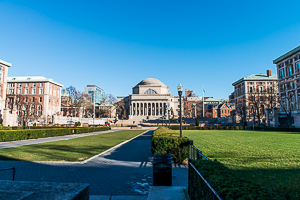 |
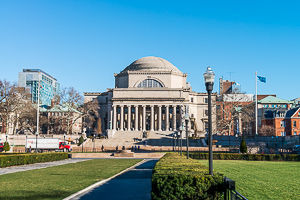 |
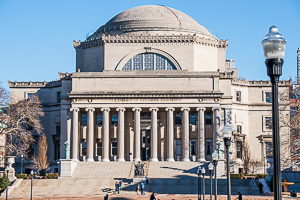 |
| 24mm | 50mm | 100mm |
 |
 |
 |
| 145mm | 200mm | 300mm |
|
The size of the opening in front of a lens, its aperture, influences the size and
cost of a lens (sometimes quite dramatically). Lenses with larger apertures let in more light and
can allow you to take photos in darker conditions. These lenses
are also larger in diameter (and heavier) given their larger front opening
and are more expensive.
A lens is usually referred to by its length and its maximum (largest) aperture. Prime (fixed focal length) lenses have one maximum aperture. Zoom (variable focal length) lenses may have one maximum aperture or as they zoom they may change maximum aperture (usually going from a larger to smaller aperture as they zoom from a shorter to a longer focal length). Apertures are referred to by a number called a "f-stop". A f-stop is actually a ratio of focal length to an aperture's diameter at that f-stop. If you're math-phobic then you might consider skipping a few paragraphs until the paragraph beginning "If I've lost you in the mathematical weeds" Mathematically it would be; F-stop = focal length / diameter of opening For example; A f-stop of f/2.0 in a 50mm lens would indicate that the diameter of the front opening of the lens at f/2 is 25mm (2 = 50mm / 25mm). 2.0 (F-stop) = 50mm (focal length) / 25mm (diameter of aperture) Using this formula we can see that a Nikon 50mm f/1.8 lens has a lens opening diameter of about 28mm (1.8 = 50mm / 28mm) or a little more than one inch. Another example; A f-stop of f/2.0 in a 200mm lens would indicate that the diameter of the front opening of the lens at f/2 is 100mm (about 4 inches, 2 = 200mm / 100mm). The two Nikon lenses shown at right illustrate this physically. The 50mm f/1.8 lens at top weighs 6.5 ounces and is about 3" x 2" in size. The 200mm f/2 lens shown below it weighs about 6.5 pounds and is about 5" x 8" in size. If I've lost you in the mathematical weeds then just remember that 1. larger aperture / f-stop numbers indicate smaller diameter apertures and vice-versa, 2. larger maximum apertures (smaller f-stop numbers) require a larger opening (diameter) in the front of a lens, 3. larger diameter openings in front of the lens require larger pieces of glass (which are called elements) and 4. that larger maximum aperture lenses are usually larger, heavier and more expensive. Also note that a larger image sensor will require a larger lens (in diameter). The images at right illustrate this. A typical way of referring to a lens would be by naming its length following by its maximum aperture. A "85mm f/1.8" lens is one that is 85 millimeters long and has a maximum aperture of f/1.8. A zoom lens with a fixed maximum aperture could be referred to as a "70-200mm f/2.8". The 85mm lens has a maximum aperture that is larger than 70-200 zoom lens's aperture as f/1.8 is a larger aperture than f/2.8. A lens which shifts its maximum aperture as you zoom might be referred to as a "70-300mm f/4.5-5.6". Typically, the maximum aperture gets smaller (going from f/4.5 to f/5.,6) as you zoom from the shorter focal length (70mm in this case) to the longer focal length (300mm). Below is an illustration showing different apertures sizes in a particular lens (from https://en.wikipedia.org/wiki/Aperture). 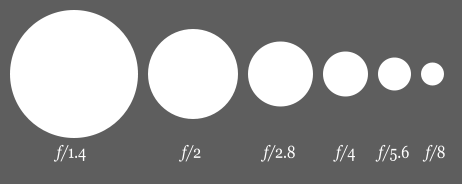 |
 Nikon 50mm f/1.8 lens (full frame) (3"x2", 6.5 oz, $217)  Nikon 200mm f/2.0 lens (full frame) (5"x8", 6.5 lbs, $5,700)  source: https://en.wikipedia.org/wiki/Apertur |
|
|
The above illustration (on the left) shows what are referred to as "full apertures"
or "full f-stops".
The change between any two adjacent apertures shown above either halves
or doubles the amount of light let through the lens. The following
sequence is a list of standard full apertures; 1.0, 1.4, 2.0, 2.8. 4.0, 5.6, 8.0, 11,
16, 22 (and so on). What you may have noticed is that if you double one
apertures number then you get the aperture number that is two places away
in the sequence (if you double 1.4 then you get 2.8 and so on). This
doubling can help one remember this sequence as all you need to remember
is two adjacent numbers in the sequence. In general, faster (larger aperture / smaller f-stop number) lenses cost and weigh more than equivalent lenses with smaller maximum apertures. Slower (smaller maximum aperture / larger f-stop number) lenses are generally smaller, lighter and less expensive than equivalent lenses with larger maximum apertures. There are an infinite number of aperture sizes in theory as the opening at the front of the lens can open to apertures in between full apertures. Apertures that are halfway between full apertures are referred to as half stops. Apertures that are one third the way between full apertures are referred to as one-third stops. In reality, lenses can open to apertures in smaller increments than this (i.e. one-eighth stops). Lens lengths for cameras are generally given in terms of what they would be on full frame cameras. On full frame cameras (same as 35mm film cameras) a 50mm lens is considered a normal lens. Lenses with a shorter focal length are considered wide-angle lenses and lenses longer than this are considered telephoto lenses. Any discussion of lens options for a digital camera must start with an understanding of how the size of the image sensor in a camera is related to the focal length of a lens. In the days before digital cameras all 35mm film cameras created images on 35mm film that were the same size (36mm x 24mm). Digital cameras have sensors of all sorts of sizes (see above discussion of image sensors). If a 200mm lens (a telephoto lens) created an image on a full fame sensor then imagine that in the same camera we swapped the full frame sensor for a smaller one. A popular Mirrorless / DSLR sensor size is called APS-C (see above) and is less than half the size of a full frame sensor. If we swapped this smaller sensor for the full frame sensor then the image created by the 200mm lens would be appear larger - the smaller sensor would only see the center part of the images created by the 200mm lens. We commonly call this Field of View (FOV) or Crop Factor. |
||
 |
||
| In the image above the camera on the right has a full frame sensor and the camera on the left has a smaller sensor. As discussed above, imagine what each sensor would see if the same lens was mounted on each camera. Image source: https://en.wikipedia.org/wiki/Digital_single-lens_reflex_camera | ||
|
A full frame
camera has a field of view (or crop factor) of one. An APS-C sized sensor has a FOV
of 1.5. The FOV is a multiplier to figure out what angle of view a
lens (in full frame / 35mm film terms) would have on a specific camera
based upon its sensor size. If a 200mm is used on a APS-C sensor
sized (FOV = 1.5) camera then it would have the equivalent angle of view as that of
a 300mm lens used on a full frame camera. We multiply the focal length
of the lens by the FOV of the sensor to determine this (200mm x 1.5 =
300mm). The upshot of this is that when using a camera with a sensor smaller than full frame means that any lens used on it will have an effective focal length longer different than that of the stated size of the lens. A Canon S120 camera (a small point-n-shoot camera) has a sensor that is much smaller (1/1.7") than that of a full frame camera. The FOV (Field of View) of a sensor its size is 4.6. The actual size of the zoom lens on it is 5.2 - 26mm in length. The effective length is 24 - 120mm given its FOV multiplier (i.e. 5.2mm x 4.6 = 24mm and 26mm x 4.6 = 120mm). Cameras with fixed (non-interchangeable) lenses on them generally advertise their lenses in terms of their effective focal length in full frame (35mm film) terms. The Canon S120 mentioned above would generally list 24 - 120mm as the length of its lens in advertisements even though it is actually 5.2 - 26mm in length. Listing all fixed lens cameras this ways allows us to compare lenses on the same (35mm / full frame) terms regardless of the size of the sensor in the camera. |
||
| Categories of Cameras (Take Two) | ||
|
Previously I wrote that there were two categories of cameras, those with
interchangeable lenses and those with fixed (non-interchangeable)
lenses. While this is true, there are other ways to
categorize cameras. Among fixed lens cameras some categories are based upon size, some are based upon the type of lens they have attached to them and some are based upon their image sensor size. Just to confuse matters there are cameras that are members of a multiple of these subcategories. There are generally two types of interchangeable lens cameras, DSLR's and Mirrorless lens cameras. The term DSLR refers to Digital Single Lens Reflex Camera. DSLR's bounce light coming in through the lens up to a viewfinder so that the user can see what the image coming through the lens looks like. DLSR's use a mirror to bounce the image up to the user's viewfinder eyepiece. When a user presses the shutter release button to take an actual photo, the mirror quickly moves up and out of the way so that the image from the lens goes to the image sensor instead of the viewfinder / user. When a photo is actually being taken with a DSLR the user can not see out through the lens (they see nothing). Generally this blackout is very short. |
||
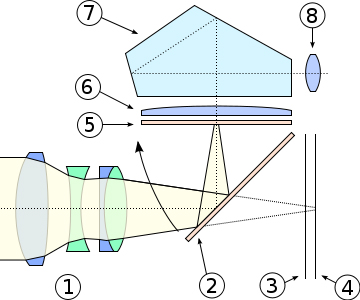 |
 |
| The diagram at left shows how light travels through a DSLR. It comes in through the lens (1), gets bounced by a mirror (2) up and around and eventually comes out via an eyepiece (8) where the camera's user sees the image. When a photo is actually taken the mirror (2) rotates upward clearing a path for light to strike the image sensor (4). The image on the right shows an actual DSLR that has been sliced apart. Both images: https://en.wikipedia.org/wiki/Digital_single-lens_reflex_camera |
| In a Mirrorless camera the viewfinder (also referred to as an EVF or Electronic ViewFinder) has a very small monitor (similar to a computer monitor) in its viewfinder. Some mirrorless cameras do not have a viewfinder and depend on the LCD screen on the back of the camera to serve this purpose (similar to most point-n-shoot cameras). There is no mirror in a mirrorless camera to bounce the image from the lens up to the viewfinder. The image is always going straight to the image sensor which is how the user can see the image on the monitor in their electronic viewfinder or on the LCD. |
 |
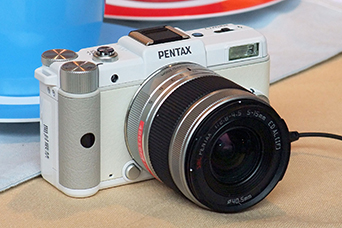 |
| This image at left shows a mirrorless camera without a lens attached and the image on the right shows one with it attached. Image sources: https://en.wikipedia.org/wiki/Sony_A6000, https://en.wikipedia.org/wiki/Mirrorless_interchangeable-lens_camera |
| So onto the various categories; |
| Fixed Lens Cameras: | |
| Subcompacts and Compacts - These are cameras that are referred to by their size. They usually have a small (1/1.7" or 1/2.3") sensor. Just to confuse matters further a few cameras in this category have much larger 1" sensors (i.e. Sony RX-100 series). | |
| Superzooms - Cameras with superzooms have zoom lenses that can vary over a very wide range (i.e. 25-400mm or a 16x zoom ratio) and can extend to very long focal lengths (i.e. 400mm). | |
| Large Sensor Cameras - As noted in the name, these cameras generally have larger sensors (up to full frame). | |
| Interchangeable Lens Cameras : | |
| DSLR's - DSLR's can have sensors of various size but most are either APS-C (FOV = 1.5) or full frame (FOV = 1). | |
|
Mirrorless - Mirrorless cameras are more variable than
DSLR's in terms of what size their sensor might be. They can range
from quite small to full frame. Since mirrorless cameras do not have a mirror or the mechanism to control it, they can be smaller, lighter and less expensive as they generally have fewer parts than DSLR's. Another benefit is that they are generally noticeably quieter as the movement of the mirror in a DSLR (called mirror-slap as it hits one end of its movement for each exposure) and the shutter opening and closing for each exposure is much louder. |
| Other Features | |
| There are an almost infinite number of other features that a camera might have. Some can dramatically alter the price of a camera and others less so. | |
| GPS - Some cameras have a GPS (Global Positioning System) inside of them so that they can insert the location that the image was taken into the image's metadata (the data in a digital image file that you don't see in the actual image). | |
|
Exposure Modes - All digital cameras have an "Auto"
option where all you need to to do is push one button and the camera
makes all the rest of the decisions in terms of exposure (what shutter
speed, aperture and ISO to select). We've discussed apertures previously (above) so lets now turn to shutter speeds and ISO. A shutter is the device that lets light reach the image sensor. It is like a garage door that opens and closes for each exposure. If you hear a mechanical sound from your camera then it is likely to be this (and possibly the mirror in a DSLR). ISO, which stands for International Standards Organization, is a rating as to the sensitivity of a sensor to light. Film has one non-changeable ISO rating for speed (called ASA or DIN years ago and now called ISO). Digital cameras have a single base / native ISO that according the specific camera can typically ranges from 80 - 200. Unlike film cameras, digital cameras can change the ISO of their sensors. This can be very useful when taking a photo in a darker place. Unfortunately there is no "free lunch" when you increase the ISO of a digital camera. Digital cameras take their highest quality images at their base ISO. Raising it lowers the quality of this image. Raising it a little bit may not not have any noticeable negative effects but raising it too much will result in images that are noticeably inferior. OTOH, it may be worthwhile to have inferior images than no images if raising the ISO is only way to obtain an image. In the images below, the camera used (Sony RX-100 II) has a base ISO of 100. One can expect the highest quality image quality at this ISO. If we used the base ISO (100) then at an aperture of f/4.5 the shutter speed for a correct exposure would have been two seconds. Had we used that shutter speed then most of the people would have been blurred as they would have moved in that time. With an exposure at ISO 400 (below left) we were able to get our shutter speed down to a half-second. Some people are blurred (lower right side of image) but most are not. When we look at just a small section of the image (2nd image down on the left) we see that the sign "Ticket Machines" is reasonably sharp. If we wanted to avoid blurring the people then we can raise the ISO (i.e. to 12,800, see image below on the right). This results in the use of a shutter speed of one-sixtieth (1/60) of a second and there would be less perceptible blurring of people who were moving. Unfortunately, using such a (very!) high ISO results in a much lower quality image as seen in a small section of the image (second image down on the right). |
|
 |
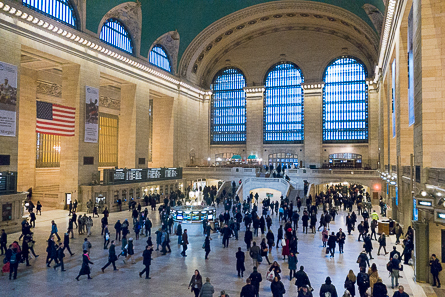 |
|
| ISO 400 (0.5 second, f/4.5) | ISO 12,800 (1/60 second, f/4.5) | |
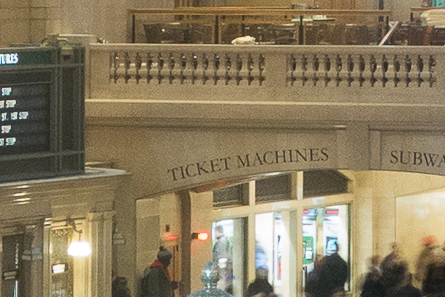 |
 |
|
| ISO 400 (0.5 seconds, f/4.5) | ISO 12,800 (1/60 second, f/4.5) | |
|
In general, most cameras can tolerate the use of an ISO higher than
their base ISO and still produce images that are of very good quality.
Cameras with larger pixels generally can create images of good quality
at higher ISO's than cameras with smaller pixels. This is one of the
major reasons why photographers favor cameras with larger sensors. The triangle below shows how aperture, shutter speed and ISO relate. A change to one of the three requires at least one of the other two to change to keep the same exposure Technically only aperture and shutter speed changes affect exposure, how much light hits the image sensor, as changes to ISO on a digital camera simply tells the camera to amplify the incoming light a certain amount - less for lower ISO's and more for higher ISO's. |
|
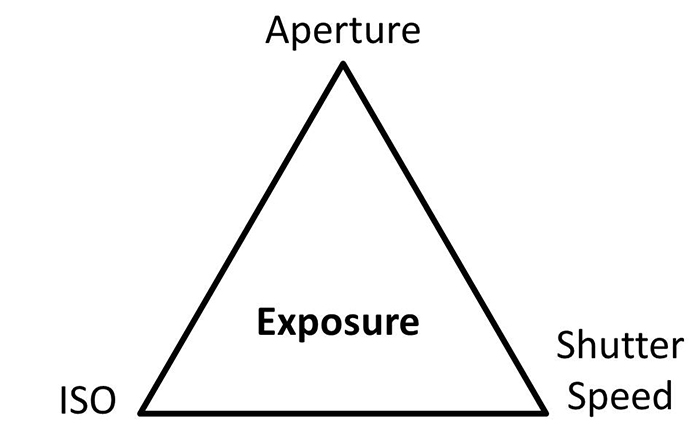 |
|
|
Now
that we understand apertures, shutter speeds and ISO let's discuss
exposure modes. Many cameras offer
modes other than "Auto". The most common ones are manual, aperture priority, shutter
priority and program. When using manual mode a user
sets the aperture, shutter speed and ISO and the camera makes no
decision about them. In aperture priority mode
the user sets the aperture and the camera sets the shutter speed (and
the ISO setting if the ISO is set to auto). In shutter priority
mode the user sets the shutter speed and the camera sets the aperture
(and the ISO setting if the ISO is set to auto). Finally, program mode
is a like auto mode but allows the user to influence the decisions that
the camera might make. Many consumer oriented cameras also offer exposure modes for specific situations such as portraits, sports, landscapes and nighttime usage. These modes are like auto modes but since the camera is being told by user what type of subject is being photographed, the camera will try to make the most appropriate choices of aperture, shutter speed and ISO. Finally, while every camera lets a user press the shutter release and take one photo, many also allow continuous shooting at different speeds such that when the shutter release button is held down the camera will take photos continuously. Photographers who photograph sports generally prefer cameras with little lag time and that continuously take photos at a very fast rate (i.e. up to 20 frames a second). Focus Modes - You may have noticed that in every photo not everything in the photo may be in perfectly sharp focus. This is because of what is called Depth of Field (DOF). Depth of Field is the area in the image that is in focus. If you were to focus on a person's face then not only might it be in focus but some things in front of and in back of this person's face may also be in focus. There are three things that influence what is and what is not in focus in an image. The first is (obviously) what you have focused the camera on. The second is the aperture being used. Larger apertures (lower numbered f-stops such as f/1.4) have a shallower DOF whereas smaller apertures (such as f/8) have a wider DOF. The third and last variable is the size of the image sensor. Cameras with smaller sensors generally have wider DOF's which is why most images taken with smartphones and small point-n-shoot cameras have virtually everything in focus in almost every image. The images below demonstrate how an aperture can influence depth-of-field. Please note that it is for illustrative purposes only and that the use of f/16 and f/22 is generally not advised due to the effects of diffraction (which is well beyond the scope of this guide). This is why people might buy more expensive lenses to get wider maximum apertures so as to better isolate subjects from a background. |
|
 |
 |
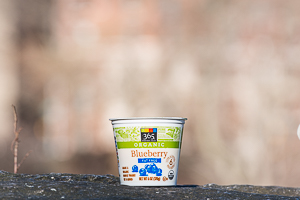 |
| f/2.8 | f/5.6 | f/8.0 |
 |
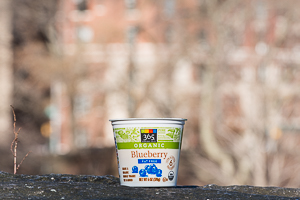 |
 |
| f/11 | f/16 | f/22 |
|
One might ask why wouldn't a photographer use the maximum aperture of a
lens all the time and not just when they were trying to isolate a
subject from a background. There are three common reasons for this. One
is obviously when the photographer wants there to be a greater
depth-of-field in their image. The second is the fact that most
lenses are sharpest when the aperture used is two to three stops smaller
than its maximum aperture. The last is that sometimes a photographer
wants to use a longer shutter speed (which a smaller aperture would
require). Now that we understand DOF we now turn our attention to the various focusing options that a camera might offer. All cameras allow a user to select the one area of an image in which to use to focus (some cameras only allow a spot in the center of the frame to be this single point of focus). Other cameras have the ability to guess where you might wish to focus on in an image and some cameras having face recognition. There are a multiple of other focus modes and variations of the ones discussed here that are more complex and beyond the scope of this guide. |
|
| Image Stabilization - This is called "Vibration Reduction" by Nikon. Some cameras and some lenses have the ability to reduce the movement (and blur) that may be caused by not holding a camera perfectly steady. While there is a limit as to how much an image can be stabilized, this feature is generally very useful for most photographers who hand hold their cameras (and don't use a tripod). In fixed lens cameras image stabilization is either built-in or not. In cameras with interchangeable lenses it varies with some cameras having image stabilization built into the camera body and some having it built into lenses - and some built into both. | |
|
RAW - Most consumer oriented cameras produce images
only in the JPEG format. A small percentage also allow one to produce
an image in the RAW format. The RAW format image has all the information
as it comes from the image sensor whereas a JPEG image is an
image that the camera produces internally from this same RAW data.
RAW digital image files are much larger than JPEG's as they have all the
image sensor's data whereas a JPEG image, via processing by a camera's
computer is created from the RAW image in a format that is much more
compact. One might ask here why bother with larger RAW image files if JPEG's are available. The answer is that RAW files contain more image data than can be contained in a corresponding JPEG. This extra data allows users using software such as Adobe Photoshop or Adobe Lightroom to do things that are not possible and/or as easily done with JPEG's. A JPEG image has, for each pixel, separate values for the red, green and blue light levels at that pixel. A JPEG can only have 256 values for each of these levels. A RAW file can have many more values (i.e. 4096) for each of these colors at for each pixel. This allows more subtle detail to be drawn out of each image. In addition, a RAW file allows the user to change the white balance of a image anytime after it is taken whereas a JPEG image has it permanently embedded in it when it is created. Another question you might have why don't we all shoot in the RAW format. The short answer is that the process of using software such as Adobe Photoshop / Lightroom demands much more time from the user as well as much more training in how to use these software applications. For most casual photographers the JPEG image that comes directly from their camera is more than adequate for their needs. In general, cameras that can produce RAW images cost more than equivalent cameras that can't. |
|
|
System and System Support - Most users of fixed lens
cameras do not need or use any accessories that are made
specifically for their camera (other than extra batteries and possibly a
flash). Hence they can switch camera brands easily each time they buy a
new camera. Users of interchangeable lens cameras are more likely to have an interest in using different lenses on their camera. Once they have purchased a multiple of lenses and other accessories for their camera they don't generally want to start over with an entire set of replacement lenses and accessories for a new camera model when they replace their existing model. They generally prefer another camera from the same manufacturer that can use the same set of lenses and other accessories that they have acquired for their original camera. One of the reasons that most serious photographers own either Canon, Sony, or Nikon cameras is because an investment in lenses and accessories will not be wasted each time they change cameras as most if not all of these lenses and accessories will work on a new model from the same manufacturer. As Canon and Nikon have been producing cameras, lenses and other accessories for a very long time, their "systems" are much larger, with many more options, than other manufacturer's systems. Note that Sony cameras also have great support from third party accessory manufacturers. Given the dominance of Canon, Sony and Nikon in full frame cameras, other manufacturers are more likely to bring out compatible lenses, flashes, software and other accessories for them than for any other manufacturer's system. Please note that I did not write here that Nikon, Sony or Canon take better photo's than other manufacturer's camera. If you are a serious photographer (and not a possible Leica buyer) and are thinking long term then the brands with the largest support from accessory manufacturers would probably make a better long term investment. If you are interested in an APS-C sized system then Fuji is the only one with a variety of available lenses and accessories and decent third party support. |
|
| Weather / Waterproofing - Some cameras are inherently waterproof and can be used underwater without any special housing. Other cameras are weatherproof which means that a few drops of water should not hurt them. Cameras and lenses that are weather or waterproof generally cost more than equivalent cameras that are not. | |
| WiFi / Bluetooth - Some camera's offer the ability to transmit images that they have captured (fancy word for taken) to another device (such as a computer, hot spot, tablet or smartphone) using WiFi. Similarly some cameras use Bluetooth for communications with other devices. | |
| General Advice | |
|
Most purchasers of cameras know a few key pieces of data when
contemplating the purchase of a camera. 1. They have a sense of what and how they will use it. 2. They have a sense what / how the images will be used (i.e. Facebook, large posters on a wall etc). 3. They typically have a budget in mind. 4. They generally know what is an acceptable size and weight for the camera. 5. They know how much they wish to be technically involved in taking a photo - do they want full control and RAW images or just to push one button and not worry about the rest. 6. They know if there are any specific "must have" features that a camera must have. It is the answers to these questions that will guide you in selecting a camera. |
|
| Specific and Sometimes Subjective Thoughts and Advice |
| Event Photography | ||
| If the event is a very quiet one (small quiet room) then one has to question whether the use of a DSLR is acceptable if one wants to be maximally unobtrusive. If so then a fixed lens or mirrorless camera might be the best option. If very quiet operation is not an issue then any camera might be acceptable as long as it can capture good quality images given the circumstances and constraints of the event. These constraints could include poor lighting (i.e. live theatre, concerts and many other events), not being able to get close to the "action", fast moving action and the like. | ||
| High Quality Small Cameras | ||
| There are a small number of cameras that are compact (can fit in a small pocket) and have larger (1" or larger) sensors. One example is the Sony RX-100 series of cameras. | ||
| Landscapes | ||
| While any type of camera can be used to photograph landscapes, serious landscape photographers typically prefer high megapixel cameras, larger sensors as well as the sharpest interchangeable lenses available. They also tend to use tripods whenever possible so as to get the sharpest image. | ||
| Low Light Situations | ||
|
There are situations when lighting may be poor and the use of a flash is
either prohibited or would not be effective (if the distance to the
subject is too great). In general, cameras with larger sensors excel in
these circumstances. Astrophotography For those looking specifically for a camera optimized for night sky photography (stars, galaxies) there are a few cameras specifically optimized for this (i.e. the Nikon D810A). If you are generally looking for a camera that works well in low light but not specifically for a one to photograph stars and galaxies then it is suggested that you look at other cameras that work well in low light. |
||
| Quiet Settings | ||
| Those preferring cameras that are quiet in operation should stay away from DSLR's as their shutter and mirror make a noticeable amount of noise relative to other types of cameras. Most fixed lens cameras are fairly quiet as are mirrorless cameras. | ||
| Portraits | ||
|
While any camera and lens can be used for portraiture, certain
combinations of lenses and cameras can be uniquely advantageous in
certain circumstances. Environmental portraits generally entail the use of wide angle lenses to capture not only the subject but also their surroundings. In some cases the photographer may want everything to be in focus (large depth-of-field) and sometimes they only want the main subject to be in sharp focus (shallow depth-of-field). To get everything in focus in a wide angle image the use of a smaller aperture as well as cameras with a smaller sensor can make accomplishing this easier. To restrict focus to only parts of an image the use of a larger aperture and the use of larger sensor cameras will help facilitate this. The public has become used to selfies taken with a camera held at arm's length. One disadvantage of this technique is that the wide-angle lenses that most smartphones and point-n-shoot cameras have can, when held at arm's length, create distortions in the shape of one's face (i.e. a larger than actual sized nose). Classic portraits are usually shot with moderate telephoto lenses (85mm on a full frame camera) and a classic portrait lens is an 85mm f/1.4 as its wide aperture allows limited depth-of-field if desired. |
||
| Serious Hobbyists and Aspiring Professional Photographers | ||
|
As discussed in the
System and System Support section above, those looking
to make long term investments (whether initially or over time) in a
system of cameras, lenses, flashes and other accessories need to
consider not just whether they like one specific model of camera but
whether the system around it is robust and is likely to be so for the
foreseeable future. Currently, Canon, Sony and Nikon have full systems consisting of a wide selection of cameras, lenses, flashes and accessories. In addition, they have major support by other manufacturers making lenses, flashes, software and lots of accessories. Lastly, they also have programs specifically designed to support working professional photographers. While Canon, Sony and Nikon own the majority of the market in cameras used by professionals, there are professionals that use cameras produced by other manufacturers. Some professionals and serious hobbyists use Fuji (APS-C) crop-sensor cameras which are smaller and lighter than full frame cameras. A small percentage of professionals use medium format camera systems which have various advantages (potentially superior image quality) and disadvantages (large, heavy and more expensive) relative to full frame systems. Lastly, Leica cameras are used by a very small percentage of photographers. The author of this guide used to use two major systems. For work that favors or requires traveling light he had a system based upon Sony a6000 cameras (APS-C sensor). Its major advantages is the small size and weight of the major components (camera bodies and lenses) of the system, the very quiet operation of a mirrorless camera and the relative low cost of the system. He understood that this system is less capable in some ways than full frame. For work that does not require small, light cameras and lenses he has a system based around Nikon full frame mirrorless cameras. This is not to say that Nikon cameras are better than those of other brands. The author has used Nikon camera's for many years and has an investment in accessories that would have to be traded for other brand based accessories if he changed systems. He also is used to Nikon's ergonomics and nuances and would have to learn another system's ergonomics and nuances if he switched systems. In general, Canon, Sony and Nikon are competitors which both have very capable and robust systems and even if one component of one system is superior to a similar component of the other system, overall they are both comparable and capable enough that one is not ever likely to be limited because they picked one system instead of another as they are both robust and excellent. The photographer is a much more critical component of the creation of a great image than the brand of camera they use. A good photographer can create better images with inferior equipment than a mediocre photographer can with superior equipment. Having said that, if one is investing with a long time horizon but can't afford the latest and best equipment from Nikon, Sony or Canon then buying late model used equipment from these manufacturers is a viable option as it is readily available. |
||
| Sports | ||
|
Other than photography involving chess tournaments, photography
involving sports generally demands a camera with quick reflexes. These
quick reflexes include the ability to focus quickly, capture a multiple
of images in a row at a fast rate, have the option of using fast (wide
aperture) long telephoto lenses and to shoot good quality images in poor
light if necessary.
DSLR's are the one type of camera that excels in all of these areas. Recently, some mirrorless cameras (Nikon Z9, Sony A9, Canon R3) also excel for in these areas. Among DSLR's there is a range of abilities and serious sports photographers can commonly be seen using the top end DSLR's and select mirrorless models that are designed with sports photography in mind. Most professional sports photographers use appropriate model produced by Nikon, Sony and Canon. These models include the Sony A9, Nikon D6 and Z9 and the Canon 1Dx and R3. They will generally pair these models with large / fast telephoto lenses (such as a 400mm f/2.8). |
||
| Travel | ||
| Deciding which camera to take on a trip can result in many different answers depending on what kind of trip one is taking, what the practical constraints of the trip and the general questions (see General Advice above) that one may ask themselves when buying any camera. With that in mind below is general advice based for certain specific trip types. | ||
|
Safari's - Safaris usually involve photographing
animals from a great distance (although occasionally one will get lucky
and can safely get close to an animal they wish to photograph).
Those wanting fixed lens cameras should consider "superzoom" style
cameras which have lenses that can extend to very long focal lengths
(i.e. 400mm). As photographs may be taken towards the beginning or end
of the day when there is less light, a camera with a larger sensor has
an advantage. Fortunately there are cameras which meet these
criteria. One example is the Panasonic Lumix DMC-FZ1000. Serious photographers will generally opt for cameras and lenses similar to those selected by serious sports photographers (see above) although they may not need the frame rate that only top end DSLR cameras may offer. |
||
| Water Based Trips - Canoeing, rafting and other water based trips where it is likely that a camera might get wet demand cameras that are waterproof. Fortunately there are quite a few models of fixed lens cameras that are waterproof. Another alternative is to buy a waterproof housing for a non-waterproof camera. | ||
| Websites / Resources | |
| B&H Photo - Possibly the largest volume specialty vendor of photographic equipment in the US (and maybe the world?). Their NYC store is over 70,000 square feet in size and contains lots of photographic on display and in stock as well as many salespeople that can answer questions. The author has been a customer of theirs for a very ling time and feels very comfortable recommending them. Their website has lots of information about all types of photography related products. | |
| byThom - Thom Hogan is IMO a true guru with a number of websites including one dedicated to Nikon DSLR's, one dedicated to Nikon mirrorless cameras, and two more general websites. His thoughts are always worth seriously considering. | |
| DPreview - A very large and respected website with news, test reports and a great deal of information about digital cameras. This is the probably the dominant website in this field. | |
Michael's Recommendations for Specific Cameras Please note that the author prefers larger image sensors and shoots RAW all the time and his preference for shooting RAW influences what is listed below. Please note that virtually all DSLR's and mirrorless cameras shoot RAW as an standard option. Please note that some of the specific recommendations may not be current. |
|
| Camera Category | Specific Camera Model Recommendations |
| Superzoom (1" sensors) | Panasonic Lumix DMC-FZ1000, FZ2500, Sony Cyber-shot DSC-RX10 IV |
| DSLR's - Sports and low light (full frame) | Nikon D5, D6, Canon 1Dx |
| DSLR's (full frame) | Nikon D780, D850 |
| DSLR's (APS-C sensor size) | Nikon D7200, D500 |
| Mirrorless Sports and low light (full frame) | Canon R3, Nikon Z9, Sony A9 |
| Mirrorless (full frame, interchangeable lenses) | Sony A7/A9/A1 (multiple models), Nikon Z (multiple models), Canon R5/R6 |
| Mirrorless (APS-C sized sensor, interchangeable lenses) | Sony A6000-6600 series, Nikon Z50, Canon R7, also consider the various Fuji options |
| Compact Camera (shirt pocket size, 1/1.7" sensor) | |
| Compact Camera (not shirt pocket size, 1/1.7" sensor) | consider the Sony RX-100 II instead (has a 1" sensor) |
| Compact Camera (1" sensor) | Sony RX-100 (Versions 2 through 7), Canon PowerShot G5X Mark II |
| Feedback / Questions: Please feel free to email Michael Brochstein with any comments, suggestions and/or questions. | |
| Full Disclosure: This is to let you know that the author has no financial interest in any of the items, vendors or websites mentioned on this page. | |
Last update: 1/19/2023
Copyright © 2016-2023 Michael Brochstein. All rights reserved.